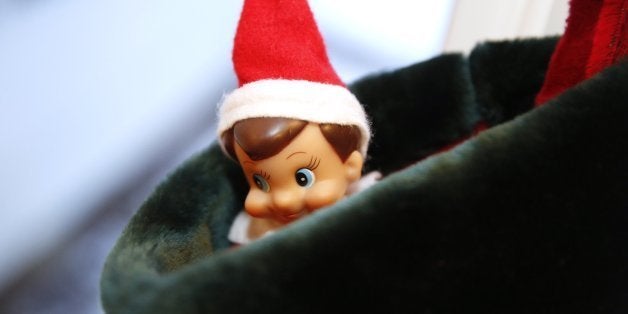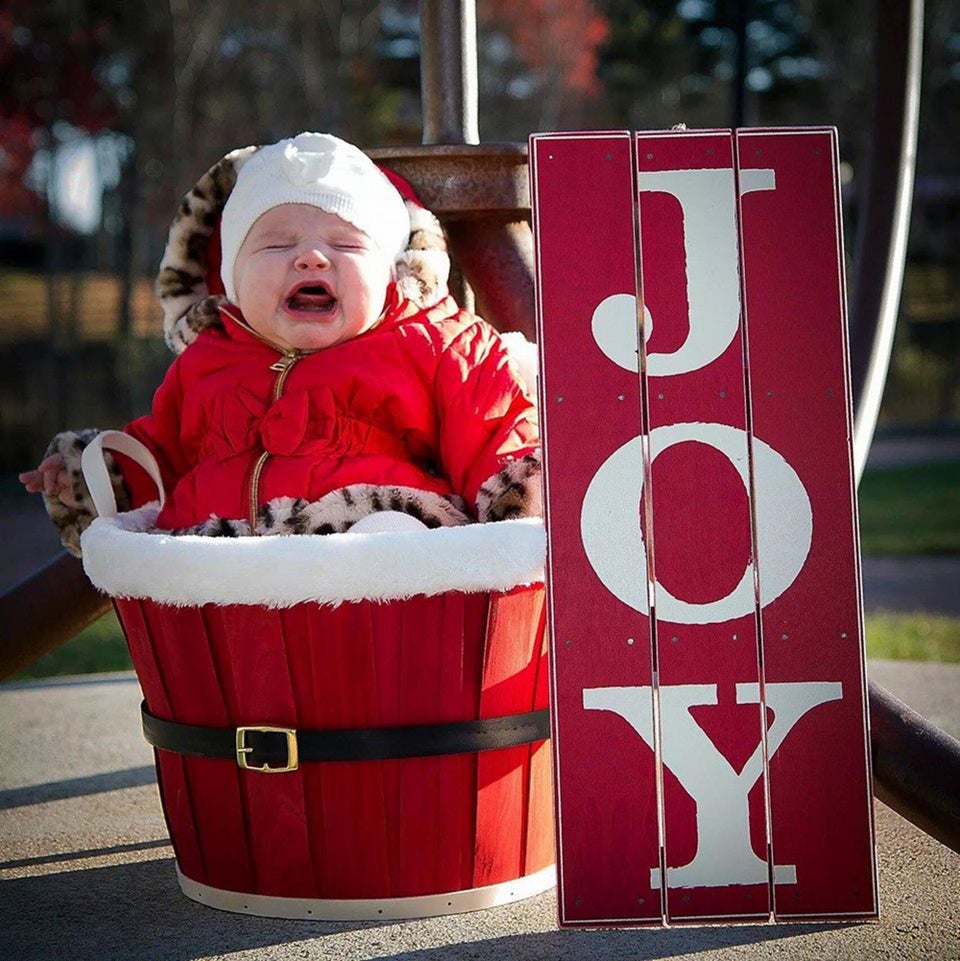
The Elf on the Shelf sees you when you're sleeping; he knows when you're awake. And he'll tell Santa if you've been good so that you can be rewarded with gifts on Christmas morning -- because whether we like it or not, material rewards are pretty effective motivators.
That's the impetus behind Elf on the Shelf, a doll based on a fictional character plucked from the Christmas traditions of Christa Pitts and Chanda Bell and their mom, Carol Aebersold. When Pitts and Bell were little girls, their mother would place a toy elf named Fisbee in various places around the house from Thanksgiving until Christmas Eve. Fisbee was Santa's personal dispatch and would watch over them to see if they were well-behaved. That way, Santa could supply them with Christmas gifts accordingly.
In 2005, this childhood game became a wildly popular product called The Elf on the Shelf: A Christmas Tradition.
But, depending on how you spin it, the toy might be sending the wrong message to kids.
There are people who feel that traditions like Elf on the Shelf put an undue emphasis on receiving gifts. Instead of encouraging kids to feel self-satisfaction from their virtuous deeds, parents may be inadvertently doling out extrinsic rewards to coerce good behavior.
"There's a very clear message with something like [Elf on the Shelf] and with the whole Santa Claus 'naughty or nice' concept, which is: If you're good, you'll get stuff," Tim Kasser, a psychology professor at Knox College, told The Huffington Post.
The thing is, all of that stuff isn't making kids happier. Studies have shown that the more people focus their lives around materialistic goals, the less satisfied and the more insecure they are. On the other hand, kids who are taught the value of gratitude have better grades and reduced rates of depression.
A 2014 study by Joseph Grenny and David Maxfield, co-authors of Influencer: The New Science of Leading Change, gauged how the framing of the holiday affects kids' behavior.
They gathered 58 kids between the ages of 5 and 8 for a Christmas party with Santa. Each child participant was partnered with another child to meet with Santa. For half of the pairs of kids, Santa would ask the standard question: What do you want for Christmas? For the other half, Santa would switch up the traditional framing: What presents are you excited to give someone for Christmas? They were then given the chance to pick either a large piece of chocolate or a small piece of chocolate, knowing that their partner would get the one they didn't choose.
Of the children presented with the traditional framing, 67 percent took the larger chocolate. For children who heard the generous framing, only 53 percent took the larger chocolate. The discrepancy between the two groups may not be enormous (and the sample itself is pretty small), but these findings suggest that the way we frame Christmas for kids can encourage selflessness.
See how Maxfield and Grenny conducted their study:
What Daniel Cook, a professor of Childhood Studies and Sociology at Rutgers University-Camden, finds particularly noteworthy about the Elf on the Shelf is that it adds another layer to the holiday environment. The elf is intended to be a disciplinary mechanism, so the "naughty or nice" message, as it relates to gifts, can get an extra nudge.
"It allows parents to displace their authority onto this secondary fantastical being, this elf, that is related to Santa," Cook said. "In a way, both kids and parents become reliant on this elf on the shelf."
There are ways to use Elf on the Shelf in ways that will make your children more prone to giving.
The thing about Elf on the Shelf is that it doesn't have to be billed as a gatekeeper of gifts.
"The words we use define what Christmas means to our children," Maxfield told The Huffngton Post. "The Christmas cues, the way society and the way many parents talk about Christmas, sets up a scenario that would make even the most giving child be tempted to get, get, get."
Both Maxfield and Grenny say the solution is to have your kids make a sacrifice or take a personal initiative for someone else during Christmas -- perhaps to please the elf, but not for the purpose of receiving more gifts. Have them volunteer at a food bank, save up money for a relative's gift or donate some of their toys to less fortunate children. When children actually engage in altruistic behavior, that can make a huge impression on them.
"If you frame it as an opportunity to give, it creates its own rewards and intrinsic satisfaction for the child," Grenny said.
The Elf on the Shelf can be helpful if you use it as a model of being generous when explaining it. The elf could be sticking around not just to decide if the child is worthy of receiving gifts; maybe it's there to remind kids that the spirit of Christmas is about giving.
Bell, one of the toy's creators, said it’s "really up to parents to determine how they use The Elf on the Shelf and experience the tradition with their children."
"Because the elf reports nice things back to Santa, it provides a great opportunity to encourage families to do kind deeds, give to charity or participate in philanthropy," Bell said. "Santa can also deliver gifts that are not material in nature, like a donation to charity in a family's name, or something faith- or family-focused."
